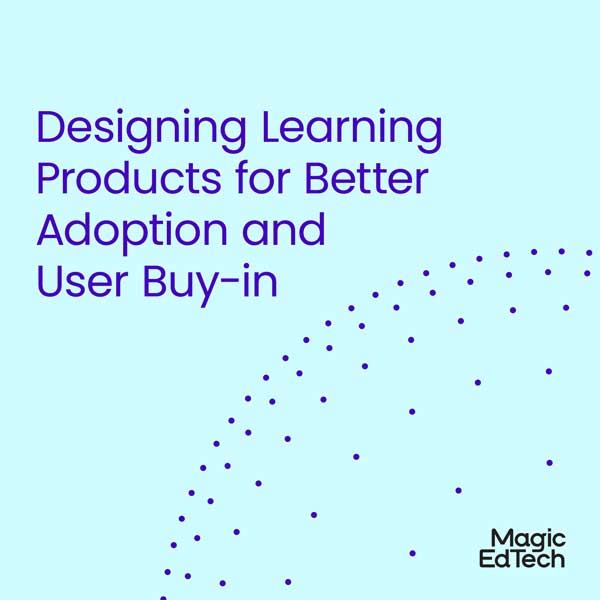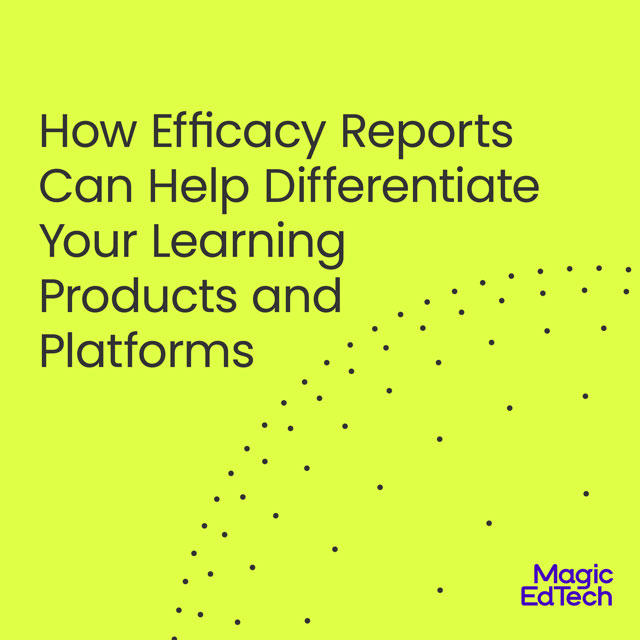Designing Learning Products for Measurable Learning Efficacy
- 28 July, 2022
- Reading Time: 4 minutes
Learning efficacy may well be at the top of the list of conundrums when purchasing learning products. For school/district leaders, it is: How can we measure the ROI? Do these products promise an ROI – transformed learning experience value at optimal investment? For makers of edtech: How do we frame the narrative on the learning achievement data to demonstrate value? For all, it boils down to: How can we ensure this product/service delivers the outcomes that matter most to the learners?
Together, these challenges form a large part of what may not be working for edtech. We’ve devised a few pointers below to help address the two, to help edtech companies and school leaders on their quest for better learning products.
Learning Product Efficacy
To begin, let’s dive into what learning product/service efficacy might mean to you. Different educational institutions define success differently. For each product, start by listing all the possible outcomes that the learning product can deliver. And then, choose which ones matter the most to the students and educators who will be using them.
Only once we have identified the outcomes that matter, can we begin to employ the right strategies to improve those outcomes. And in order to begin, there are a few factors that need to be measured.
What do we Evaluate to Measure Learning Product Efficacy?

The evaluation criteria broadly fall under these three categories:
Instructional Efficacy of the Program/Curriculum
Do the learning tasks allow learners and instructors to understand the content with ease? If the learning product is scaffolded to a strong instructional approach, then it is likely that it will perform well.
For example, microlearning is an emerging trend in education. It may seem fruitful to develop small consumable learning modules that appeal to shorter attention spans. But in order to be truly successful, each module needs to be tied back into the larger curriculum through strong instructional design with tangible and measurable performance goals as the endpoint.
Student’s Learning Efficacy
The efficacy of the product also depends on the ability of the learner to relate to the instruction. Choose or develop a product that gives the learner a higher chance of performing well.
For example, make the product more relatable to a diverse set of learners (if your product is content) or make it easily navigable (if it’s a learning platform). Learning performance can be captured by metrics that indicate that a student has advanced to a higher level or attained a better score in understanding the module.
Teaching Efficacy
Does the product instill confidence within your teaching faculty? Teachers should be able to easily organize and execute courses of action within the teaching plan.
Chalk out what may be required of a teacher in order to execute a specific teaching task successfully. If the ask is long and complex, chances are that the product may not be successful in a particular context. It may fail due to low teacher adoption or the resulting heavy efforts required in professional development.
The Challenge with Measuring Learning Product Efficacy.

Through our years in consulting and research on the various products in the market, we’ve developed a set of challenges where we see organizations generally falter.
The measurements are not specific to the context
The term “learning gap” has been touted throughout the annals of education history. But the truth is that the gap can mean many things when measuring efficacy. We must evaluate these gaps to understand if the problem lies with the instruction, the learner behavior, or the teaching strategy. Defining the core reasons for these gaps will help grease the wheels for better product efficacy.
Product adoption that lacks a framework
Frameworks are meant to guide measurement, but very often, products aren’t adopted using a framework. Without this crucial aspect, an adoption journey can be winding, inefficient, and ineffective.
Designing a Structure for Product Efficacy Evaluation.
When evaluating or developing a learning product, it helps to have a similar framework for guidance on efficacy parameters. A learning efficacy assessment framework can help build a better platform or product that delivers the desired outcomes.
It also helps tag standard, universally-adopted metrics within the product design and fuels learning and teaching strategies.
This structured approach to educational product development facilitates the right combination of the resources and enables a better student experience.
Here Is a Reference Framework for an Educational Assessment Product.

Note: This framework allows observation and collection of the design decisions and metrics that Product Managers can use to evaluate target efficacy scores.
- Relevance of claims and aspects of proficiency – What are the performance expectations that would be measured?
- Adequacy of tasks – What design principles elicit the intended claims or guide the performance expectations?
- Scoring – Are the rubrics capturing the range of evidence for claims?
- Assessment performance – What statistical approaches will be used to make inferences about claims from scores? Determine if scores are a reliable measure of claims.
To conclude, products planned with efficacy from the start can be easily integrated in the future for a cohesive learning ecosystem. These are assured to be student-centered, accessible, and data-driven. These advances in technology can help affordably scale and improve educational participation and attainment.




